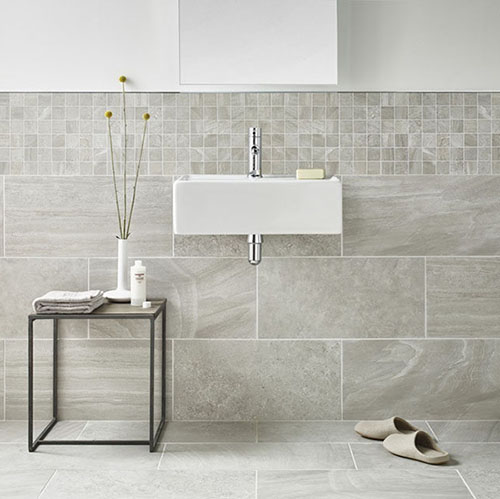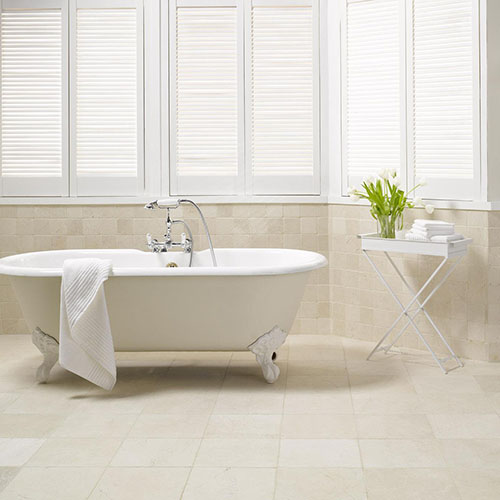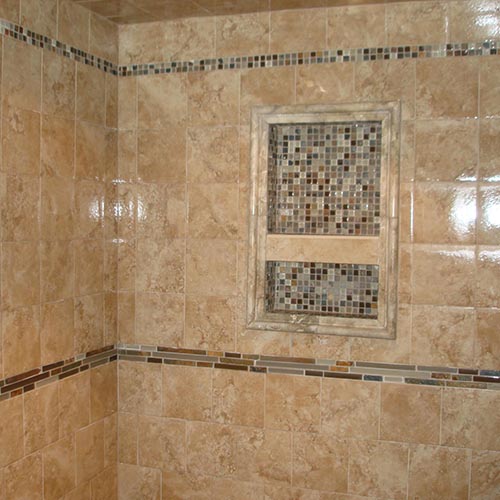Budget Bathroom Tiles
Servicing Abbotsford Annandale Ashbury Ashfield & nearby areas.
Schedule An Appointment. CALL 1300 786 621



Types of Bathroom Tiles
Porcelain or Ceramic
Porcelain or Ceramic
Porcelain and ceramic tiles are made from a clay mixture. The mixture is pressed to make the desired shape and heated at extremely high temperatures to form a tile. These tiles can be glazed for use in a bathroom.
They’re available in different patterns, sizes, shapes, and colors. A modern method for glazing these tiles is fusing high definition digital images on their surface. This makes them more decorative.
Natural Stone
Natural Stone
Tiles made of natural stone are generally rough and ideal for use in a contemporary or rustic bathroom.
They’re not waterproof, thus they require an impervious membrane to make them withstand the moist condition of bathrooms.
Give us a call to learn more about these contemporary natural stone tiles. They are sure to give you a stunning new look.
Glass
Glass
Tiles made of glass are quite elegant and luminous. They’re available in different colors and custom hues. These tiles are often used to create focal points on bathroom walls.
They are also used in bathroom wall mosaics. Glass tiles resist staining and are impervious to water.
They are ideal for use on floor areas with low traffic and on walls.
Marble
Marble
Marbles are natural stones obtained naturally from limestone. Marble tiles are traditional and sophisticated.
They come in different sizes and may be polished. They can be veined or patterned to add an interesting touch to the bathroom.
Decorative
Decorative
These tiles are made from different materials and decorated or embossed with different patterns or images such as stripes, birds, and leaves.
They are ideal for a mosaic, mural or a border. They can also be used as a bathroom accent.
Granite
Granite
This stone is typically harder than most naturally available stones. Granite tiles come in different textures and colors.
They are ideal for floors areas with high traffic and countertops. Granite tiles give you a classy finish and are have high resistance to abrasions.
Limestone
Limestone
Limestone is yet another natural stones used for making tiles.
The surface of limestone tiles is honed, and they’re available in yellow, brown, and beige hues.
They are perfect for flooring and countertops.
Terra-Cotta
Terra-Cotta
These tiles are fired at a low temperature.
They are non-vitreous, low-density, and only ideal for use in dry areas. They may be glazed for use in a bathroom.
These tiles are pretty versatile and are becoming popular in Australian homes.
Metal
Metal
These tiles are typically made from a solid metal. They’re also made from resin coated with a metal.
Metal tiles come in finishes such as copper, stainless steel, and bronze. They are typically used as a bathroom accent alongside other tile varieties.
Travertine
Travertine
This is a form of limestone which is obtained naturally from minerals. These minerals are usually dissolved in underground water and pushed by water through the crust to form travertine. This stone has multiple layers.
Travertine tiles have earthy colors. They offer a sophisticated look when used on bathroom floors and walls.
Cement-Bodied
Cement-Bodied
These tiles are made from a mortar and cured sand mixture.
Cement-bodied tiles are non-vitreous and durable.
Some have a rough-hewn look while others have a sport smooth finish. They provide a natural look to the bathroom.
Saltillo
Saltillo
Saltillo tiles are a type of terracotta tile. They are dried rather than being fired. They originate in Saltillo, Mexico.
They are non-vitreous and low-density.
These tiles are rough textured and their natural imperfections make them ideal for adding a rustic charm. However, they’re permeable.
Slate
Slate
This stone has a fine texture. It is made from a clay and shale mixture which is transformed by pressure and heat.
Their surface is textured and this makes them slip-resistant. They are ideal for countertops, walls, and floors.
Quarry
Quarry
Quarry tiles are thrust and heated at extremely high temperatures.
They can be either vitreous or semi-vitreous.
They are fired unglazed and come in different shapes, sizes, and colors.
Our Bathroom Renovation Services Include:
Full & Partial Renovations
Drywall/Painting
Vanities and Vanity Tops
Plumbing
Medicine Chests & Mirrors
Flooring
Medicine Chests & Mirrors
Tub to Shower Conversions
Barrier Free Showers
Tub Refinishing
& More
Floor and Wall Tile Ideas for Small & Large Bathrooms
Since you spend a good majority of your time in the bathroom it only makes sense to keep it well maintained. However, taking on the job of bathroom remodeling by yourself can be quite a challenge.
Especially, if it’s the first time you’ve performed this particular task. After all, there’s a lot involved with renovations like what type of tile would be most suitable for your powder room.
It may seem to be something which is a small part of bathroom remodeling, But, choosing floor tiles is actually of the utmost importance. You want everything to blend in nicely.
Especially when you’ve family and friends visiting. Installing bathroom tiles on your floor requires both time and patience. Lucky for you, there are some methods which will make the entire process easier for you. Below is a list of step by step instructions to help get you started.
Putting in bathroom tiles is relatively easy! By following these few simple steps and having the proper materials you will have the ability to install your tiles within no time.
Some of the tools which are essential for your project are, a measuring tape, pencil, tiles, sponge, tile cutter, grout, spacers, durable gloves, a level, and goggles. Now you’ve purchased all of the necessary supplies, let’s get started!
Step One: Thoroughly Inspect the Place In Which You’re Placing Tiles
Prior to installing your bathroom tiles, Make sure to do a thorough inspection where the tiles will be placed. Next, clean the entire powder room from top to bottom.
This will ensure the tiles to securely lock into place and remain there. If you have any old wallpaper or tiles located in the area you’re working with, remove it before getting started.
Step Two: Check out How the Tiles fit
You don’t want to make an estimated guess about the number of tiles in which you’re going to need. After you have prepared the area and it’s nice and dry, lay several of the tiles down, in order to see how they fit.
This will give you a general idea of what your finished product will look like. Keeping your measuring tape handy writing down how many inches you will need to cut off of the tile. Which is of the utmost importance for the next step to be successful.
Step Three: Cutting the Tiles With Precision and Accuracy
This is the step where you check out the measurements you’ve jotted down and start cutting the tiles. One of the most important things to remember is staying focused on your task at hand!
Not only does it ensure accurate cuts, this also helps to make your bathroom appear to have been remodeled by a professional as well. If you’re feeling a little bit nervous about performing this part of your project, it’s perfectly fine for you to ask the assistance from someone who’s more experienced.
Step Four: Begin to Install the Bathroom Tiles
When you’ve successfully accomplished your last task, you can now install the bathroom tiles one at a time. Once you have laid down the freshly cut tiles put in some spaces. Afterwards lifting the tiles and spreading an even coat of adhesive down onto the walls and/or floors.
Carefully place the tile back down in place and wiping any excess adhesive which may have gotten on the tiles. Continue doing so until the entire area being tiled is completed. Now all you have to do is wait for the adhesive to set overnight.
Step Five: Filling in Any Gaps
After setting, you are now able to add some grout to it. Using gloves, Start mixing grout according to the instructions on its container.
Begin taking out the spacers, making sure to spread grout evenly while you’re doing this. However, make sure to be careful or it could end up being quite a mess. Just like before, use your sponge to wipe off any excess adhesive from the tiles.
Once you are finished, give it several days to harden.
You’ll have a newly tiled bathroom floor. See that, you did it all by yourself! For those of you who are nervous about putting tiles in their powder room, stop worrying! You have the ability to do it as well.
